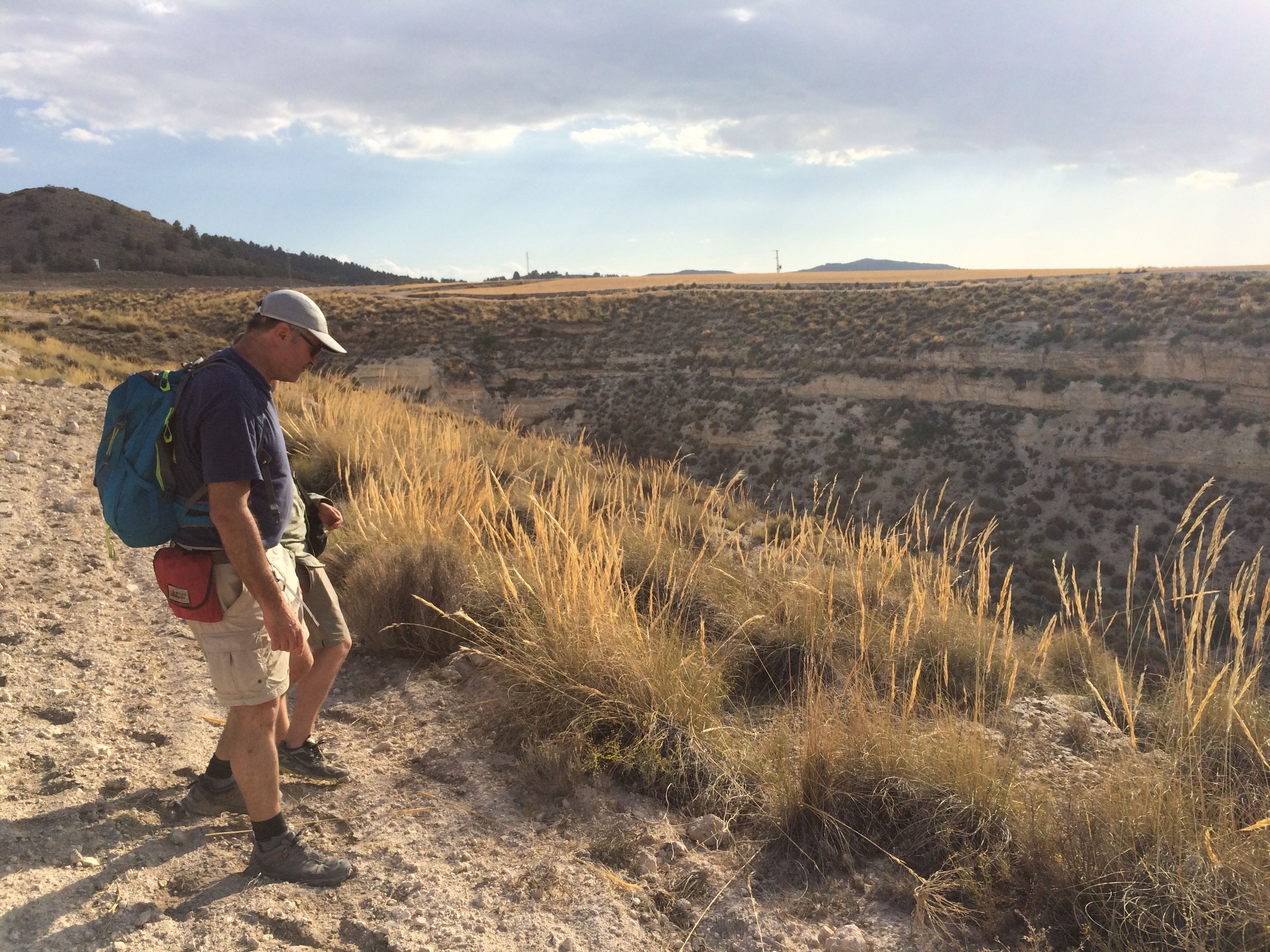David Anastasio is a geologist in the Department of Earth and Environmental Studies at Lehigh University. He is currently blogging from his research site in Spain. Catch up here!
A persistent debate surrounds the chronology of the colonization of Europe. The Guadix-Baza Basin in southern Spain is the repository of 2,000 m of ancient sedimentary strata that record the depositional, climatic, ecological, and tectonic events along the European-African plate boundary at a time of hominin migration out of Africa. The basin was also the

lake beds where a 1.4Ma hominid tooth (pictured) was discovered site of the last connection between the Atlantic Ocean and Mediterranean Sea before the modern connection at Gibraltar. Retreat of the seaway resulted in the largest lake in Europe, which evolved from grassland environments to a savannah landscape with abundant game. Previous studies have established the paleoenviromental evolution of the archeological sites but without precise chronologies it is not possible to reconcile arguments as to whether evolving climactic or geographic barriers in the Betic Cordillera were instrumental in facilitating the peopling of Europe or whether hominins simply “followed the herd”.
Josep Parés (Spanish Research Center for Human Evolution) and I are using the record of periodic changes in Earth’s orbital parameters (Milankovitch cycles) that are encoded in nearly all sedimentary rocks to refine chronologies. Orbital cycles are known to result in natural long-term variations in Earth’s climate. When tuned to absolute time control, cyclostratigraphy constitutes a metronome with a precision, accuracy, and continuity that out performs other dating methods. Our sampling strategy will allow the basin’s paleoarcheology sites to be more precisely dated and correlated so that coordinated paleogeographic and paleoenvironmental parameters can be established.
